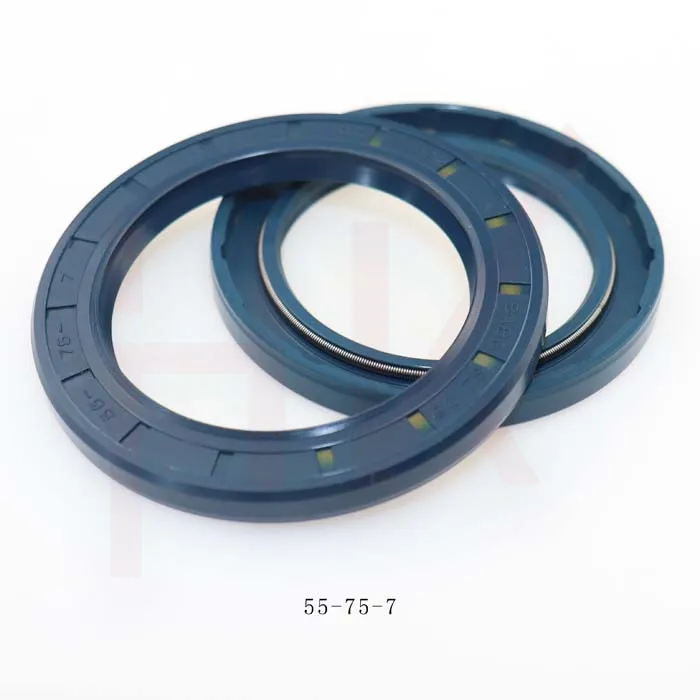Nov . 21, 2024 04:10 Back to list
rotary shaft seal
Understanding Rotary Shaft Seals Essential Components for Machinery Efficiency
In the realm of mechanical engineering and machinery design, the rotary shaft seal plays a crucial role in ensuring the effective function and longevity of various equipment. These seals are essential in preventing fluid leaks from rotating shafts, maintaining the integrity of systems containing lubricants, oils, or other fluids. This article delves into the nature of rotary shaft seals, their construction, types, applications, and maintenance considerations, providing a comprehensive overview of this vital component.
What is a Rotary Shaft Seal?
A rotary shaft seal, also known as a lip seal or rotary seal, is a sealing device designed to retain fluids while preventing contaminants from entering a machine. The seal consists of a flexible lip that fits against the rotating shaft, creating a barrier that inhibits fluid movement. The design allows for minimal friction between the seal and the shaft, which is crucial for machine efficiency and longevity.
Construction of Rotary Shaft Seals
Rotary shaft seals are typically made from rubber or elastomeric materials, providing flexibility and durability. Common materials include nitrile rubber (NBR), fluorocarbon (FKM), and polychloroprene (CR), each selected based on the specific environmental conditions the seal will encounter. The construction of a rotary shaft seal often includes a metal casing that offers structural support and assists in installation. Additionally, many designs incorporate a garter spring, which exerts pressure on the seal lip to ensure a consistent seal against the shaft, compensating for wear and maintaining effectiveness over time.
Types of Rotary Shaft Seals
Rotary shaft seals come in various types to suit different applications. Some common types include
1. Single Lip Seals These are the most straightforward design and are commonly used in applications where the pressure differential is low.
2. Double Lip Seals These seals feature two lip edges and provide enhanced protection against contaminants and fluid leakage. They are ideal for challenging environments.
3. Spring-Loaded Seals Incorporating a garter spring, these seals maintain pressure on the sealing lip, improving performance and adapting to shaft wear over time.
4. Rotary Pressure Seals Designed for high-pressure applications, these seals can handle significant fluid pressures while maintaining their sealing capabilities.
rotary shaft seal

Applications of Rotary Shaft Seals
Rotary shaft seals are versatile components found across various industries. Common applications include
- Automotive Used in engines, transmissions, and differentials to prevent oil leaks and keep lubricant within the system.
- Industrial Machinery Employed in pumps, gearboxes, and compressors, ensuring that fluids remain contained and operational efficiency is upheld.
- Aerospace Critical in delivering performance in high-speed rotating components while preventing contamination from external elements.
- Agricultural Equipment Ensuring the longevity of machinery by protecting vital components from dirt and moisture.
Maintenance and Considerations
The efficacy of rotary shaft seals can diminish over time due to wear, adverse operating conditions, or improper installation. Regular maintenance checks are essential. Users should monitor for signs of leaking, dirt accumulation, or unusual noises, as these may indicate a seal breach. Proper installation is critical—following manufacturer guidelines regarding shaft surfaces, alignment, and assembly procedures can significantly improve seal lifespan.
Additionally, selecting the appropriate seal material for the specific application is vital. Factors such as temperature, pressure, and fluid compatibility must be considered to ensure optimal performance.
Conclusion
Rotary shaft seals are indispensable components in a wide variety of machinery and applications, playing a key role in fluid retention and equipment protection. Understanding their construction, types, applications, and maintenance needs can help engineers and technicians maximize machinery efficiency and prevent costly downtimes. As industries evolve, continuing innovations in seal technology will enhance performance and reliability, securing the future of rotary shaft seals in mechanical design.
-
TCN Oil Seal Metal Ring Reinforcement for Heavy Machinery
NewsJul.25,2025
-
Rotary Lip Seal Spring-Loaded Design for High-Speed Applications
NewsJul.25,2025
-
Hydraulic Cylinder Seals Polyurethane Material for High-Impact Jobs
NewsJul.25,2025
-
High Pressure Oil Seal Polyurethane Coating Wear Resistance
NewsJul.25,2025
-
Dust Proof Seal Double Lip Design for Construction Equipment
NewsJul.25,2025
-
Hub Seal Polyurethane Wear Resistance in Agricultural Vehicles
NewsJul.25,2025
-
The Trans-formative Journey of Wheel Hub Oil Seals
NewsJun.06,2025
Products categories
















